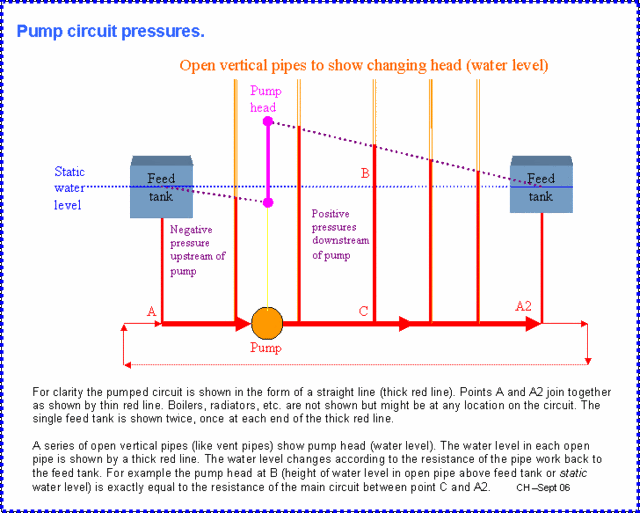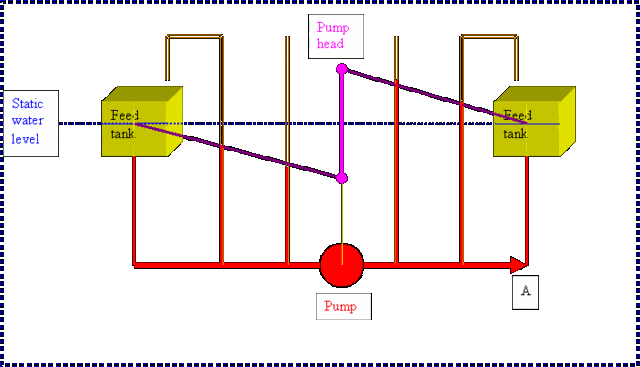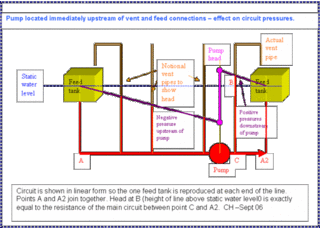PTH said:
If you have a sealed loop of pipework which is, for arguments sake 10m from it's lowest to it's highest point then the static gauge pressure at the top will be zero and at the bottom will be roughly 1 bar (please, nobody start being all pedantic about gravity and relative water densities).
If you add an expansion vessel at the top of the system and push in 0.5 bar of air the entire system pressure is raised by that value ie the gauge at thee top will now read 0.5 bar and the one at the bottom will read 1.5.
If you now move the expansion vessel to the bottom of the circuit exactly the same pressures will be found throughout the system.
This is all before any pumps start.
The question is, what does happen when the pump starts?
Consider a level loop of pipe, rads, boiler, pump, etc. From this, you have a tee with a vertical pipe rising 10m and a pressure gauge adjacent to the tee. You fill it to the top, no air left in it. Innit. Pump off, you get 1 bar on the gauge ( 98.1 kPa for pedants) and 1 bar all around the circuit, because it is horizontal.
You start the pump. Does the gauge pressure rise, fall or stay the same?
If you think the pressure rises, then the water level in the pipe must rise (H = P/ rho. g and all that). Where would the extra water come from? The loop is full, it can't suck in air, the water doesn't expand.
Same problem, but with the tee and gauge upstream of the pump inlet. You get 1 bar static pressure with the pump off. When you start the pump does the gauge pressure rise, fall or stay the same?
If you think it falls, then the water level in the vertical pipe must fall, so where would the water go to? The loop and vertical pipe are full. Water is incompressible (practically incompressible for pedants, please belt up about bulk modulus), so it does not squash up.
In both cases, it stays the same; same with a F&E tank instead of a vertical pipe, same with a diaphragm expansion vessel.
Which raises interesting questions about how the pressure changes around the circuit when the pump starts.




